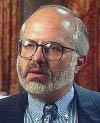The Creationist Revival after 1961For a century after the publication of Charles Darwin’s Origin of Species (1859) antievolutionists were united almost solely by their antipathy to evolution, not by agreement on the mode of creation. Among Christian Fundamentalists in the twentieth century, three interpretations of Genesis 1 vied for acceptance: (1) the gap theory, which held that the first chapter of Genesis described two creations, the first "in the beginning," at some unspecified time in the distant past, the second about 6,000 years ago, when God created Adam and Eve in the Garden of Eden; (2) the day-age theory, which equated the "days" of Genesis 1 with vast geological ages; and (3) the theory of flood geology, advocated by George McCready Price, which allowed for no life on earth before the Edenic creation and which assigned most of the fossil-bearing rocks to the catastrophic work of Noah’s flood. Until the early 1960s the vast majority of American Fundamentalists who left any record of their views on Genesis embraced either the gap or day-age schemes. Support for flood geology was limited largely to the small Seventh-day Adventist church, of which Price was a member. This division of loyalties began to change dramatically with the publication in 1961 of The Genesis Flood by John C. Whitcomb, Jr., and Henry M. Morris, and the formation two years later of the Creation Research Society (CRS). Whitcomb, an Old Testament scholar, and Morris, a civil engineer, collaborated on an up-to-date presentation of Price’s flood geology that attracted considerable attention in conservative Christian circles. Their argument that science should accommodate revelation rather than vice versa resonated with the sentiments of many concerned Christians, who followed Whitcomb and Morris in jettisoning the gap and day-age theories as unholy compromises with naturalistic science. In 1963 Morris joined nine other creationists with scientific training to form the CRS, an organization committed to the propagation of young-earth creationism. In the 1920s antievolutionists had lacked a single scientist with so much as a master’s degree in science Their most impressive scientific authorities were a successful Canadian surgeon, a homeopathic medical-school dropout turned Presbyterian minister, a Seventh-day Adventist college instructor without an earned bachelor’s degree whose most advanced exposure to science had come in a course for elementary-school teachers, and a science professor at a small Fundamentalist college whose highest degree was a master’s awarded for a thesis on the teaching of penmanship in the public schools of two Midwestern towns. In contrast, five of the ten founding members of the CRS had earned Ph.D.’s in the biological sciences at reputable universities, and a sixth held a doctorate in biochemistry. Not all of the founders, however, possessed legitimate credentials. The only geologist in the group fraudulently claimed to have received a master’s degree. About 1970, in an effort to sell their views as science and
gain entry to public-school classrooms, these young-earth creationists
renamed their beliefs creation science and dropped the label flood
geology. Although two states, Arkansas and Louisiana, eventually
passed laws mandating the teaching of creation science whenever
evolution science was taught, the U. S. Supreme Court in 1987
ruled that such laws violated the First Amendment to the Constitution,
requiring the separation of church and state. Despite this setback,
the creation scientists flourished to the point that they virtually
co-opted the term creationism for the formerly marginal ideas
of Price. Public-opinion polls in the 1990s, though failing to
distinguish young- from old-earth creationists, showed that forty-seven
percent of Americans, including a quarter of college graduates,
professed belief in the recent special creation of the first humans
within the past 10,000 years. A hundred and forty years of evolution
had left many Americans unconvinced.
Email link | Printer-friendly | Feedback | Contributed by: Dr. Ron Numbers |






